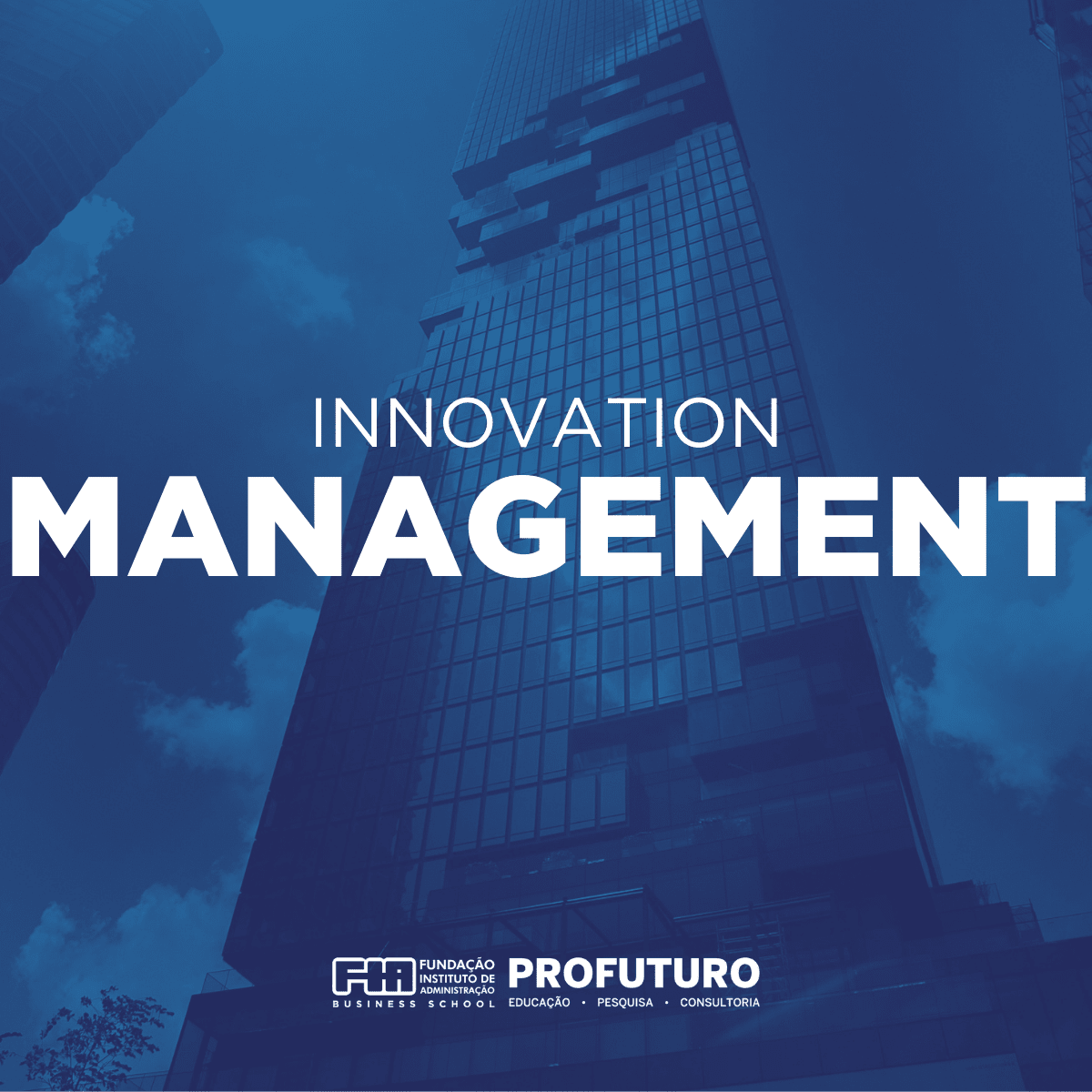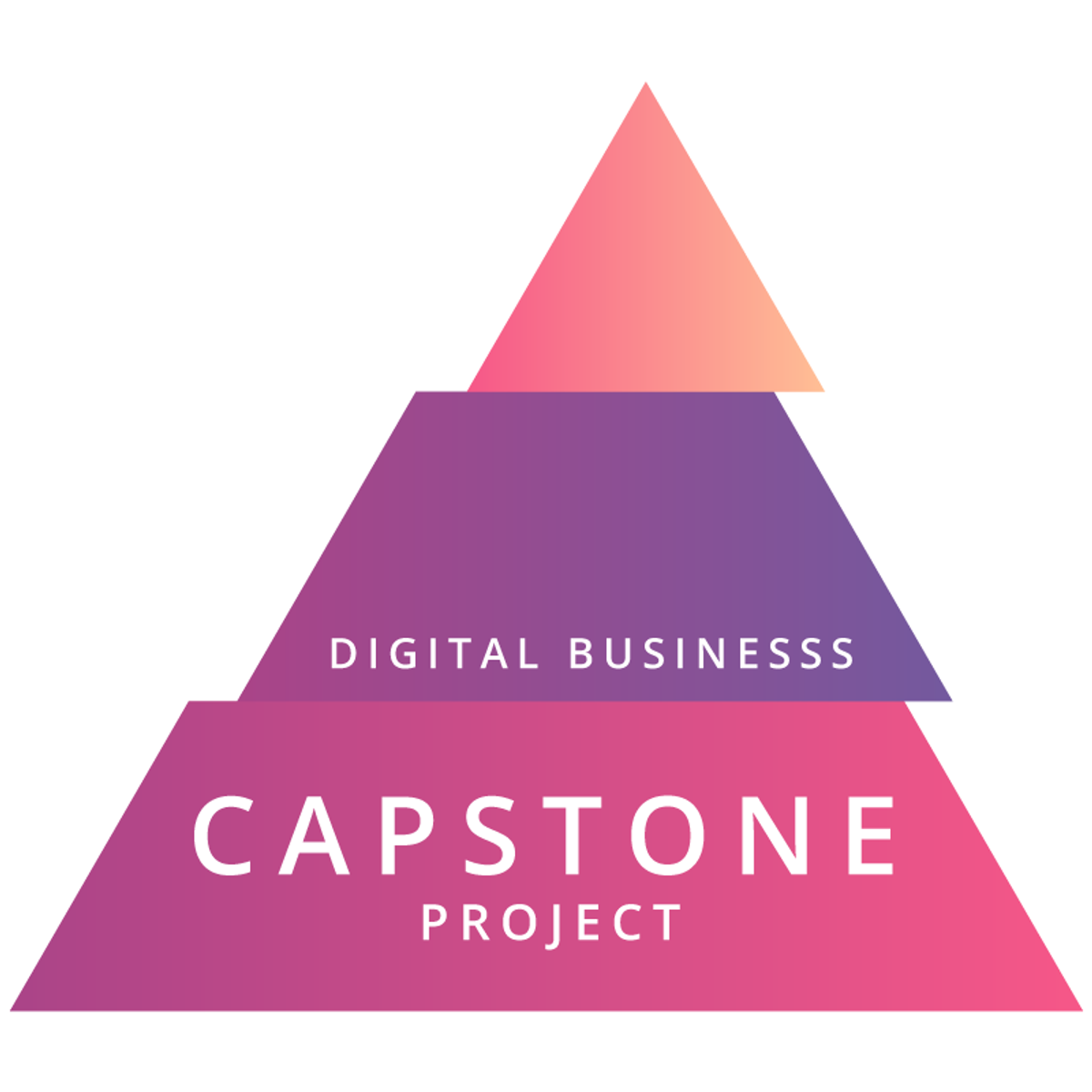Innovation Management
An Introduction to Innovation Management
Innovation Management is the systematic process of generating, developing, and implementing new ideas, products, services, or processes within an organization to achieve strategic objectives and drive growth. It's about creating a structured approach to fostering creativity, managing the journey of an idea from concept to reality, and ultimately, delivering value. This field is vital for businesses aiming to stay competitive in a rapidly changing world, as it helps them adapt, evolve, and find new avenues for success.
Working in Innovation Management can be incredibly engaging. It often involves collaborating with diverse teams, exploring cutting-edge technologies, and solving complex problems. The thrill of seeing a novel idea come to life and make a tangible impact can be immensely rewarding. Furthermore, it's a field that constantly evolves, offering continuous learning opportunities and the chance to be at the forefront of change.
Historical Evolution of Innovation Management
Understanding the history of innovation management provides valuable context for its current practices and future directions. While the systematic study of innovation management is relatively recent, the core concepts have roots that stretch back centuries.
Early Practices and the Dawn of R&D
Before the industrial revolution, innovation was often an informal and sporadic process, driven by individual inventors and artisans. There wasn't a structured "management" of innovation as we understand it today. However, the seeds of systematic improvement and the pursuit of new methods were certainly present.
The 20th century marked a significant shift with the rise of formal Research and Development (R&D) departments in large corporations. Companies began to invest strategically in scientific research and technological development, recognizing it as a key driver of competitive advantage. This era saw the emergence of more structured approaches to invention and product development, laying the groundwork for modern innovation management.
The Digital Transformation and Modern Frameworks
The digital age, beginning in the late 20th century and accelerating into the 21st, has profoundly transformed innovation management. The rapid pace of technological change, globalization, and increased market competition have made innovation a critical survival factor for organizations. This period has seen the development and popularization of numerous theoretical frameworks and practical methodologies. Concepts like 'Open Innovation', which emphasizes leveraging external ideas and collaboration, and 'Lean Startup' methodologies, which focus on rapid prototyping and iterative development, have become influential.
Over time, various theoretical frameworks have shaped our understanding of how innovation occurs and how it can be managed. Early economic theories focused on the role of entrepreneurs and technological change. Later, organizational theories explored how company structures and cultures impact innovation. More recent frameworks often integrate insights from strategy, psychology, and design thinking to provide a more holistic view of the innovation process.
Core Concepts in Innovation Management
To effectively navigate the world of innovation management, it's crucial to grasp some fundamental concepts. These ideas provide a common language and a set of tools for thinking about and implementing innovation within an organization.
Understanding Different Types of Innovation
Innovation isn't a monolithic concept; it comes in various forms. A key distinction is often made between incremental innovation and radical innovation. Incremental innovation involves making small, continuous improvements to existing products, services, or processes. Think of the yearly updates to your smartphone – each version offers slight enhancements. Radical innovation, on the other hand, involves creating entirely new products, services, or business models that can transform industries. The invention of the personal computer or the rise of streaming services are examples of radical innovations.
Another important type is disruptive innovation, a concept popularized by Clayton Christensen. Disruptive innovations often start by serving overlooked customer segments with simpler, cheaper, or more convenient solutions, eventually displacing established market leaders. Understanding these distinctions helps organizations tailor their innovation strategies and allocate resources appropriately.
For those looking to build a foundational understanding of these concepts, several online courses offer excellent introductions.
These courses can provide a solid grounding in the various types of innovation and how they apply in different contexts.
The following book is considered a important reading for anyone serious about understanding how new technologies can upend established markets.
The Innovation Funnel: From Idea to Impact
The innovation funnel (or innovation pipeline) is a widely used model to visualize and manage the innovation process. It depicts how a large number of initial ideas are progressively filtered and refined through various stages – such as idea generation, screening, concept development, prototyping, testing, and finally, market launch. The "funnel" metaphor highlights that not all initial ideas will make it to the end; many will be discarded or modified along the way.
The initial stage, idea generation, involves sourcing ideas from various internal and external channels, including employees, customers, partners, and market research. Subsequent stages involve evaluating these ideas against criteria like feasibility, market potential, and strategic fit. The goal is to systematically narrow down the options and focus resources on the most promising concepts. Effective management of the innovation funnel is crucial for ensuring a steady flow of viable innovations.
Several online learning resources can help you understand the innovation funnel and its practical application.
These courses delve into the stages of the innovation funnel and provide frameworks for managing ideas effectively.
The Importance of Cross-Functional Collaboration
Innovation rarely happens in silos. Cross-functional collaboration – bringing together individuals from different departments and with diverse expertise (e.g., R&D, marketing, operations, finance) – is essential for successful innovation. Different perspectives and skills are needed to develop a holistic understanding of market needs, technological possibilities, and business viability.
Effective collaboration can lead to more creative solutions, faster problem-solving, and smoother implementation of new ideas. It requires clear communication, shared goals, and a culture that encourages teamwork and mutual respect. Many organizations actively work to break down departmental barriers and create structures that facilitate cross-functional teamwork in their innovation efforts.
To explore this further, consider the following resources:
Measuring the Unmeasurable? Metrics for Innovation Success
While innovation often involves creativity and uncertainty, it's still important for organizations to attempt to measure its progress and impact. Metrics for measuring innovation success can help track performance, justify investments, and identify areas for improvement. However, measuring innovation can be challenging because traditional financial metrics may not capture the full picture, especially for early-stage or radical innovations.
Common innovation metrics can be categorized into input metrics (e.g., R&D spending, number of ideas generated), process metrics (e.g., time-to-market, idea-to-launch conversion rate), and output/outcome metrics (e.g., revenue from new products, customer satisfaction with new offerings, market share gained). The choice of metrics should align with the organization's specific innovation goals and strategy. It's often recommended to use a balanced set of metrics rather than relying on a single indicator.
For a deeper dive into innovation metrics, these resources can be helpful:
Strategic Innovation Management
Strategic Innovation Management is about ensuring that an organization's innovation efforts are not random acts of creativity, but are instead purposefully directed towards achieving overarching business goals. It involves making deliberate choices about where to innovate, how much to invest, and how to integrate innovation into the company's broader strategy.
Aligning Innovation with Business Objectives
A critical aspect of strategic innovation management is aligning innovation with business objectives. This means that innovation initiatives should directly support the company's overall mission, vision, and strategic priorities. For example, if a company's strategy is to expand into new geographic markets, its innovation efforts might focus on developing products or services tailored to the needs of those markets. If the goal is to be a leader in sustainability, innovation would be directed towards greener products and processes.
This alignment ensures that resources are channeled towards innovations that will create the most value for the organization and help it achieve a sustainable competitive advantage. It requires clear communication from leadership about strategic goals and a process for evaluating innovation projects based on their strategic relevance.
Courses that explore the intersection of strategy and innovation can be particularly valuable for understanding this alignment.
These courses focus on how to integrate innovation efforts with broader business strategy.
Portfolio Management for Innovation Projects
Just as financial investors manage a portfolio of stocks and bonds, organizations engaged in innovation often manage a portfolio of innovation projects. Innovation portfolio management involves selecting, prioritizing, and managing a mix of innovation projects to achieve strategic objectives and balance risk and reward.
A well-managed innovation portfolio typically includes a mix of projects with different risk levels and potential returns – from incremental improvements to existing products (lower risk, lower potential return) to more radical or disruptive innovations (higher risk, higher potential return). The goal is to create a balanced portfolio that aligns with the company's risk appetite and strategic goals, ensuring a sustainable pipeline of innovations. This involves regularly reviewing the portfolio, making decisions about which projects to continue, accelerate, or terminate, and allocating resources accordingly.
Understanding how to manage a portfolio of innovation initiatives is a key skill in this field.
The following resources provide insights into managing innovation portfolios.
The following books offer frameworks and insights into managing innovation strategically and balancing different types of innovation projects.
Resource Allocation Strategies in Innovation
Effective resource allocation strategies are crucial for successful innovation management. Innovation projects require various resources, including funding, talent, time, and equipment. Deciding how to allocate these finite resources among competing innovation opportunities is a key challenge for organizations.
Strategies for resource allocation can vary. Some companies dedicate a specific percentage of their budget to innovation. Others use stage-gate processes, where projects receive incremental funding as they pass certain milestones. Another approach involves creating dedicated innovation funds or internal venture capital units. The chosen strategy should reflect the company's innovation ambition, risk tolerance, and the types of innovation it is pursuing.
A central tension in resource allocation is balancing investments in short-term, incremental innovations that can deliver quick wins with investments in longer-term, more radical innovations that have the potential for greater impact but also carry higher uncertainty. Finding the right balance is critical for sustainable growth and competitiveness.
Balancing Long-Term Vision with Short-Term Wins
A persistent challenge in innovation management is balancing long-term innovation with short-term needs. Organizations often face pressure to deliver immediate results and meet quarterly financial targets. This can lead to an overemphasis on incremental innovations that offer quick, predictable returns, potentially at the expense of more ambitious, long-term projects that could secure future growth but are riskier and take longer to mature.
Effectively managing this tension requires a clear innovation strategy that explicitly addresses both horizons. It may involve creating separate structures or processes for different types of innovation, ensuring that resources and attention are dedicated to both near-term improvements and future-oriented explorations. Leadership commitment is vital in championing long-term innovation and protecting it from purely short-term pressures.
Formal Education Pathways in Innovation Management
For those looking to build a career in innovation management, a variety of formal educational pathways can provide the necessary knowledge and skills. These range from undergraduate specializations to doctoral research, catering to different career aspirations and levels of expertise.
Undergraduate and Specialized Master's Programs
Many universities now offer undergraduate programs with concentrations or specializations in innovation and entrepreneurship. These programs typically provide a broad business education combined with focused coursework on topics like creativity, new product development, and venture creation. They can be an excellent starting point for individuals interested in innovation-focused roles early in their careers.
At the postgraduate level, MBA programs often feature specializations in innovation management, entrepreneurship, or technology management. These programs are designed for individuals with some work experience who are looking to advance into leadership roles. Additionally, specialized Master of Science (MSc) or Master of Arts (MA) degrees in Innovation Management, Strategic Innovation, or Design Thinking offer more focused and in-depth study in the field. These programs often emphasize practical application through projects, case studies, and internships.
These courses are representative of the kind of specialized knowledge one might gain in advanced degree programs.
Doctoral Research and Academic Contributions
For individuals interested in academic research or high-level consulting in innovation management, doctoral research opportunities (Ph.D. programs) are available. Ph.D. programs in business administration, management, or related fields often allow for specialization in innovation, entrepreneurship, or technology strategy. Doctoral research typically involves conducting original scholarly work that contributes to the theoretical understanding and practical application of innovation management principles. Graduates with Ph.D.s in this area may pursue careers as university professors, researchers in think tanks, or expert consultants to corporations and governments.
Certifications and Microcredentials for Skill Enhancement
Beyond traditional degree programs, a growing number of certification programs and microcredentials offer specialized training in specific areas of innovation management. These can be valuable for professionals looking to upskill, gain expertise in a new domain (like design thinking or agile methodologies), or enhance their career prospects. Certifications are often offered by professional organizations, universities, or online learning platforms. They can provide a more flexible and targeted way to acquire specific competencies relevant to innovation roles. OpenCourser's Professional Development section can be a great place to find such learning opportunities.
Digital Learning Resources for Innovation Management
The rise of online learning has made acquiring knowledge and skills in innovation management more accessible than ever. For career changers, self-directed learners, or professionals looking to supplement their existing expertise, digital resources offer a wealth of opportunities. OpenCourser, for instance, aggregates thousands of management courses, making it easier to find relevant programs.
Crafting Effective Online Learning Paths
Online courses are highly suitable for building a strong foundation in innovation management. They offer flexibility, allowing learners to study at their own pace and often at a lower cost than traditional programs. An effective online learning path typically starts with foundational courses covering core concepts, such as the types of innovation, the innovation process, and strategic alignment. Learners can then progress to more specialized topics based on their interests, such as design thinking, lean startup methodologies, innovation metrics, or managing innovation in specific industries.
Many online courses are offered by reputable universities and industry experts, ensuring high-quality content. Look for courses that include practical exercises, case studies, and opportunities for interaction with instructors and fellow learners. OpenCourser's platform allows you to save courses to a list, helping you curate your own learning path and compare different options easily.
The Power of Project-Based Learning Online
To truly internalize the concepts of innovation management, theoretical knowledge needs to be complemented by practical application. Project-based learning is an excellent way to achieve this. Many online courses and programs incorporate projects where learners can apply what they've learned to real-world or simulated innovation challenges. This might involve developing a business plan for a new venture, designing an innovation process for a hypothetical company, or analyzing a case study of a successful (or unsuccessful) innovation.
Beyond formal course projects, learners can undertake self-directed projects. This could involve identifying a problem in their own workplace or community and applying innovation principles to develop a potential solution. Documenting these projects can be a valuable addition to a portfolio, showcasing practical skills to potential employers.
These courses emphasize practical application and project work, allowing learners to develop tangible skills.
Blending Theory with Practical Know-How
The most effective learning in innovation management often comes from a blend of theoretical understanding and practical know-how. Online courses can provide the theoretical frameworks and conceptual knowledge. Professionals can supplement this by actively seeking opportunities to apply these concepts in their current roles, even in small ways. This could involve suggesting process improvements, participating in brainstorming sessions, or volunteering for innovation-related initiatives.
Reading industry publications, following thought leaders, and analyzing real-world examples of innovation can also bridge the gap between theory and practice. The OpenCourser Notes blog often features articles and insights that can help learners connect academic concepts to current business trends.
Consider these books that blend theoretical frameworks with actionable advice.
Leveraging Online Communities for Growth
Learning doesn't have to be a solitary activity. Many online courses and platforms foster community-driven learning opportunities. Discussion forums, group projects, and peer review sessions allow learners to interact, share insights, and learn from each other's experiences and perspectives. Engaging with these communities can enrich the learning experience and provide valuable networking opportunities.
Beyond formal course communities, there are numerous online forums, professional groups on platforms like LinkedIn, and virtual meetups focused on innovation management. Participating in these communities can help learners stay updated on the latest trends, ask questions, and connect with practitioners in the field. This can be particularly beneficial for those new to the field or looking to transition into innovation roles.
Career Progression in Innovation Management
A career in innovation management can be dynamic and rewarding, offering diverse roles across various industries. The path often involves a progression from analytical and project-focused positions to strategic leadership roles. Understanding this trajectory can help aspiring innovation professionals plan their careers effectively.
Embarking on Your Innovation Journey: Entry-Level Roles
For individuals starting their careers in innovation management, typical entry-level roles include Innovation Analyst, Project Coordinator, or Junior Product Manager. In these positions, responsibilities often involve market research, data analysis, supporting innovation projects, coordinating team activities, and helping to develop new product or service concepts. These roles provide a valuable opportunity to learn the fundamentals of the innovation process, gain exposure to different methodologies, and develop core analytical and project management skills. A bachelor's degree in business, engineering, design, or a related field is often a prerequisite.
The following courses can equip individuals with foundational knowledge relevant to these entry-level positions.
Navigating Mid-Career Paths and Cross-Industry Mobility
As professionals gain experience, mid-career paths in innovation management can lead to roles such as Innovation Manager, Product Manager, or Innovation Strategist. Responsibilities at this stage often involve leading innovation projects, managing cross-functional teams, developing innovation strategies for specific business units, and fostering a culture of innovation. Strong project management, communication, and leadership skills become increasingly important.
One of the attractive aspects of innovation management is its cross-industry mobility. The principles and skills of innovation management are transferable across various sectors, including technology, healthcare, finance, consumer goods, and manufacturing. This allows professionals to explore opportunities in different industries throughout their careers, bringing fresh perspectives and adapting innovation practices to new contexts.
These courses are geared towards developing the strategic and managerial skills needed for mid-career roles.
For those considering a career pivot or aiming for mid-level roles, these books offer valuable perspectives on leading innovation and navigating change.
Reaching the Top: C-Suite Innovation Leadership
With significant experience and a proven track record of driving impactful innovation, professionals can advance to leadership positions, such as Director of Innovation, Vice President of Innovation, or even Chief Innovation Officer (CINO). In these C-suite or senior executive roles, individuals are responsible for setting the overall innovation vision and strategy for the organization, championing innovation at the highest levels, managing the innovation portfolio, and ensuring that innovation contributes directly to the company's growth and competitive advantage. These roles require strong strategic thinking, leadership acumen, and the ability to drive change across large organizations.
The following course targets skills relevant for aspiring innovation leaders.
Forging Your Own Path: Consulting and Entrepreneurship
Beyond traditional corporate career paths, innovation management skills are highly valuable in consulting and entrepreneurship. Many experienced innovation professionals become innovation consultants, advising organizations on how to improve their innovation capabilities, processes, and strategies. This can involve working with a variety of clients across different industries, offering a dynamic and intellectually stimulating career.
Alternatively, the deep understanding of identifying opportunities, developing new solutions, and bringing ideas to market gained through innovation management is directly applicable to entrepreneurship. Many individuals with a background in innovation management go on to launch their own ventures, applying their skills to create and scale new businesses. For those interested in this path, resources on Entrepreneurship can provide further guidance.
These courses may appeal to those interested in the entrepreneurial or consulting aspects of innovation.
The journey of an entrepreneur is often supported by foundational texts like these:
Innovation Management in Global Markets
As businesses increasingly operate on a global scale, understanding how to manage innovation across different countries and cultures becomes paramount. Innovation management in global markets presents unique challenges and opportunities, requiring a nuanced approach that considers diverse contexts.
The Influence of Culture on Innovation Adoption
Cultural influences play a significant role in how innovation is perceived, developed, and adopted in different parts of the world. National and regional cultures can affect everything from communication styles and risk tolerance to consumer preferences and business practices. What works in one culture might not be effective in another. For example, hierarchical cultures might approach idea generation and decision-making differently than more egalitarian ones. Understanding these cultural nuances is crucial for tailoring innovation strategies and processes to specific international markets.
Adapting to local consumer behaviors, values, and preferences is often key to successful innovation in global markets. This might involve modifying product features, marketing messages, or even business models to suit local tastes and conditions. For further exploration, International Studies courses can provide a broader understanding of cultural dynamics.
Navigating Emerging Market Dynamics
Emerging markets present both significant opportunities and unique challenges for innovation. These markets are often characterized by rapid economic growth, evolving consumer needs, and sometimes, less developed infrastructure or regulatory frameworks. Innovations that are successful in developed markets may not be directly transferable. Instead, companies often need to develop specific innovations tailored to the unique conditions and constraints of emerging economies. This can include creating more affordable products, developing solutions for infrastructure gaps (like mobile-first services in areas with limited internet access), or adapting business models to local distribution networks.
Reverse innovation, where innovations are first developed for and adopted in emerging markets and then spread to developed markets, is also an increasingly important phenomenon. Understanding the specific dynamics of innovation in these diverse and rapidly changing environments is critical for global success.
Courses focusing on business in a global context can provide valuable insights.
Regulatory Landscapes and Their Impact
The regulatory environment can vary significantly from one country to another, impacting innovation in profound ways. Regulations related to intellectual property, product standards, data privacy, competition, and environmental protection can either foster or hinder innovation. For example, strong intellectual property rights can incentivize R&D investment, while complex or uncertain regulatory approval processes can slow down the introduction of new products.
Companies operating globally must navigate these diverse regulatory landscapes, ensuring compliance while still pursuing innovative solutions. This often requires a deep understanding of local laws and engaging with policymakers. The differences in regulatory frameworks can also create opportunities for "regulatory arbitrage," where companies might choose to innovate or launch new products in regions with more favorable regulations, although this practice also carries ethical considerations.
The Art of Localization in Innovation
Localization strategies are essential for adapting innovations to meet the specific needs and preferences of different international markets. This goes beyond simple translation of product labels or marketing materials. True localization involves a deep understanding of local culture, consumer behavior, competitive landscape, and distribution channels. It may require modifying product features, user interfaces, service delivery models, or even the underlying business model.
Effective localization ensures that an innovation resonates with local customers and fits within the local market context. This often requires close collaboration with local teams, conducting market research in specific regions, and empowering local subsidiaries to make adaptation decisions. The ability to successfully localize innovations is a key differentiator for companies competing in global markets.
For those looking to deepen their understanding of adapting business practices for different markets, these books provide valuable frameworks.
Ethical Challenges in Innovation Management
While innovation drives progress and economic growth, it also brings forth a range of ethical challenges that organizations and society must navigate. Responsible innovation management involves proactively considering and addressing these ethical implications to ensure that new technologies and business models benefit society as a whole and minimize potential harm.
Frameworks for Responsible Innovation
In response to the growing awareness of the societal impacts of innovation, various responsible innovation frameworks have been developed. These frameworks provide principles and guidelines to help organizations integrate ethical, social, and environmental considerations into their innovation processes from the outset. Key elements often include anticipation of potential impacts, reflexivity (critical self-reflection on underlying assumptions and values), inclusion of diverse stakeholders in the innovation process, and responsiveness to societal needs and concerns.
The goal of these frameworks is to steer innovation towards socially desirable outcomes and to ensure that the development and deployment of new technologies are aligned with societal values. Adopting such a framework can help companies build trust, manage risks, and create more sustainable and equitable innovations.
Navigating Privacy and Data Ethics
The proliferation of digital technologies and data-driven innovation has brought privacy and data ethics to the forefront of ethical concerns. Organizations collect vast amounts of personal data, which can be used to develop new products, personalize services, and improve decision-making. However, this also raises significant risks related to surveillance, data breaches, and the misuse of personal information.
Ethical innovation management requires organizations to be transparent about their data collection and usage practices, obtain informed consent, implement robust security measures to protect data, and ensure that data is used in ways that are fair and do not lead to discrimination. Adhering to data protection regulations like GDPR is a baseline, but true ethical leadership involves going beyond compliance to build a culture of data stewardship and respect for individual privacy.
The following course touches upon innovation in the context of medical devices, where data privacy is a critical concern.
Embracing Sustainable Innovation Practices
Sustainable innovation practices focus on developing products, services, and processes that minimize negative environmental impacts and contribute to social well-being, while also being economically viable. This involves considering the entire lifecycle of an innovation, from raw material extraction and manufacturing to use and disposal, and seeking ways to reduce resource consumption, waste, and pollution.
Examples of sustainable innovation include developing renewable energy technologies, designing products for circularity (i.e., reuse, repair, and recycling), creating more efficient transportation systems, and promoting sustainable agriculture. Integrating sustainability into the core of innovation strategy is increasingly seen not just as an ethical imperative but also as a source of competitive advantage and long-term value creation. Exploring topics within Sustainability and Environmental Sciences can provide deeper insights.
Ensuring Equity in Access to Innovation's Benefits
A crucial ethical consideration is ensuring equity in access to the benefits of innovation. New technologies and innovations have the potential to improve lives and create opportunities, but there is a risk that these benefits will not be shared equally, potentially exacerbating existing inequalities. For example, access to new digital technologies, advanced medical treatments, or educational innovations may be limited for certain populations due to cost, lack of infrastructure, or other barriers.
Responsible innovation management involves considering who benefits from an innovation and who might be left behind or negatively impacted. It requires efforts to make innovations more inclusive, affordable, and accessible to diverse populations, including those in underserved communities or developing countries. This may involve designing for affordability, considering different cultural contexts, and actively working to bridge digital divides or other access gaps.
Frequently Asked Questions about Innovation Management
As you consider a path in Innovation Management, you likely have several questions. This section aims to address some of the common inquiries from those exploring this dynamic field.
What entry-level roles are available for innovation management graduates?
Graduates with a background in innovation management can find various entry-level opportunities. Roles such as Innovation Analyst, Junior Product Manager, R&D Associate, or Project Coordinator are common starting points. These positions often involve supporting innovation projects, conducting market research, analyzing data, and assisting with the development of new ideas. Companies across diverse sectors, including tech, consulting, manufacturing, and consumer goods, hire for such roles. Some graduates also pursue entrepreneurial ventures or join startups where they can apply their innovation skills directly.
How transferable are innovation management skills across different industries?
Innovation management skills are highly transferable across industries. The core principles of identifying opportunities, developing and testing new ideas, managing innovation projects, and fostering a creative culture are valuable in virtually any sector. Whether it's healthcare, finance, technology, education, or energy, organizations are increasingly recognizing the need for systematic innovation. This means that professionals with a strong foundation in innovation management can often move between industries, bringing fresh perspectives and adapting their skills to new contexts. This cross-industry applicability is one of the appealing aspects of a career in this field.
What certifications can enhance career prospects in innovation management?
Several certifications can enhance career prospects in innovation management by demonstrating specialized knowledge and commitment to the field. While not always mandatory, certifications in areas like Project Management (e.g., PMP), Agile methodologies (e.g., Certified ScrumMaster), Design Thinking, or specific innovation management frameworks can be beneficial. Some universities and professional organizations also offer specialized certificates in Innovation Management or Entrepreneurship. The value of a particular certification can depend on the specific industry and role you are targeting. It's advisable to research which certifications are most recognized and respected in your desired career path.
How does innovation management differ in startups versus large corporations?
Innovation management manifests differently in startups compared to large corporations due to variations in resources, structure, and culture. Startups are often inherently innovative, driven by a novel idea and operating with agility and limited resources. Innovation is typically less formalized, with founders and small teams rapidly iterating and pivoting. The focus is often on disruptive innovation and finding a scalable business model.
In large corporations, innovation management tends to be more structured, with dedicated departments, processes (like stage-gate models or innovation funnels), and budgets. Corporations may pursue a mix of incremental and more radical innovations, often balancing the need to protect existing revenue streams with the desire to explore new opportunities. Challenges in large firms can include overcoming bureaucracy, fostering an entrepreneurial mindset within a large organization (intrapreneurship), and integrating innovations into existing operations. Both environments offer unique learning experiences for innovation professionals.
What are common career growth bottlenecks in innovation management?
Career growth in innovation management can sometimes encounter bottlenecks. One common challenge is moving from an operational or project-focused role to a more strategic leadership position. This often requires developing strong strategic thinking, financial acumen, and the ability to influence senior stakeholders. Another potential bottleneck can be a lack of opportunities to lead significant innovation initiatives that demonstrate impact, especially in organizations with a low appetite for risk or slow decision-making processes.
Staying updated with rapidly evolving technologies and methodologies is also crucial; failing to do so can limit advancement. Building a strong professional network and seeking mentorship can help navigate these challenges. Sometimes, a perceived lack of "hard" quantifiable results from innovation efforts can also make it difficult to demonstrate value and secure promotions, highlighting the importance of effective innovation metrics and communication.
How is Artificial Intelligence (AI) changing innovation management practices?
Artificial Intelligence (AI) is significantly reshaping innovation management practices. AI tools can accelerate idea generation by analyzing vast datasets to identify trends, unmet customer needs, and potential technological breakthroughs. In the development phase, AI can assist with prototyping, simulation, and testing, potentially reducing development times and costs. AI-powered analytics can also enhance decision-making in innovation portfolio management by providing more accurate forecasts of project success and resource requirements.
Furthermore, AI is itself a powerful source of innovation, enabling the creation of entirely new products, services, and business models. However, the integration of AI also brings new challenges, including ethical considerations around data use, bias in algorithms, and the need for new skills within the innovation workforce. Innovation managers will increasingly need to understand how to leverage AI effectively and responsibly. Exploring resources in Artificial Intelligence can provide a deeper understanding of this transformative technology.
This book provides a forward-looking perspective that can be useful when considering the impact of technologies like AI.
Useful Links and Resources
To further your exploration of Innovation Management, the following resources may be helpful:
- World Economic Forum: Offers reports and insights on global innovation trends and their impact on economies and societies. You can often find their "Future of Jobs Report" on their website, which discusses evolving skill demands. For example, a relevant report is available at www.weforum.org.
- Harvard Business Review (HBR): A leading publication for business management and strategy, frequently featuring articles on innovation, leadership, and organizational change. Their website, hbr.org, is a rich source of information.
- McKinsey & Company: This global management consulting firm regularly publishes articles and reports on innovation, strategy, and digital transformation. Their insights can be found at mckinsey.com.
- OpenCourser: For finding courses and educational resources related to innovation management, strategy, and entrepreneurship, OpenCourser's management category is an excellent starting point. You can also explore related fields like Entrepreneurship and Professional Development.
Embarking on a journey into Innovation Management is a commitment to continuous learning and adaptation. It's a field that rewards curiosity, strategic thinking, and the courage to challenge the status quo. Whether you are just starting to explore this path or are looking to deepen your expertise, the resources and insights provided here aim to support your growth. The world of innovation is constantly evolving, and with dedication and the right knowledge, you can be a part of shaping its future.

























